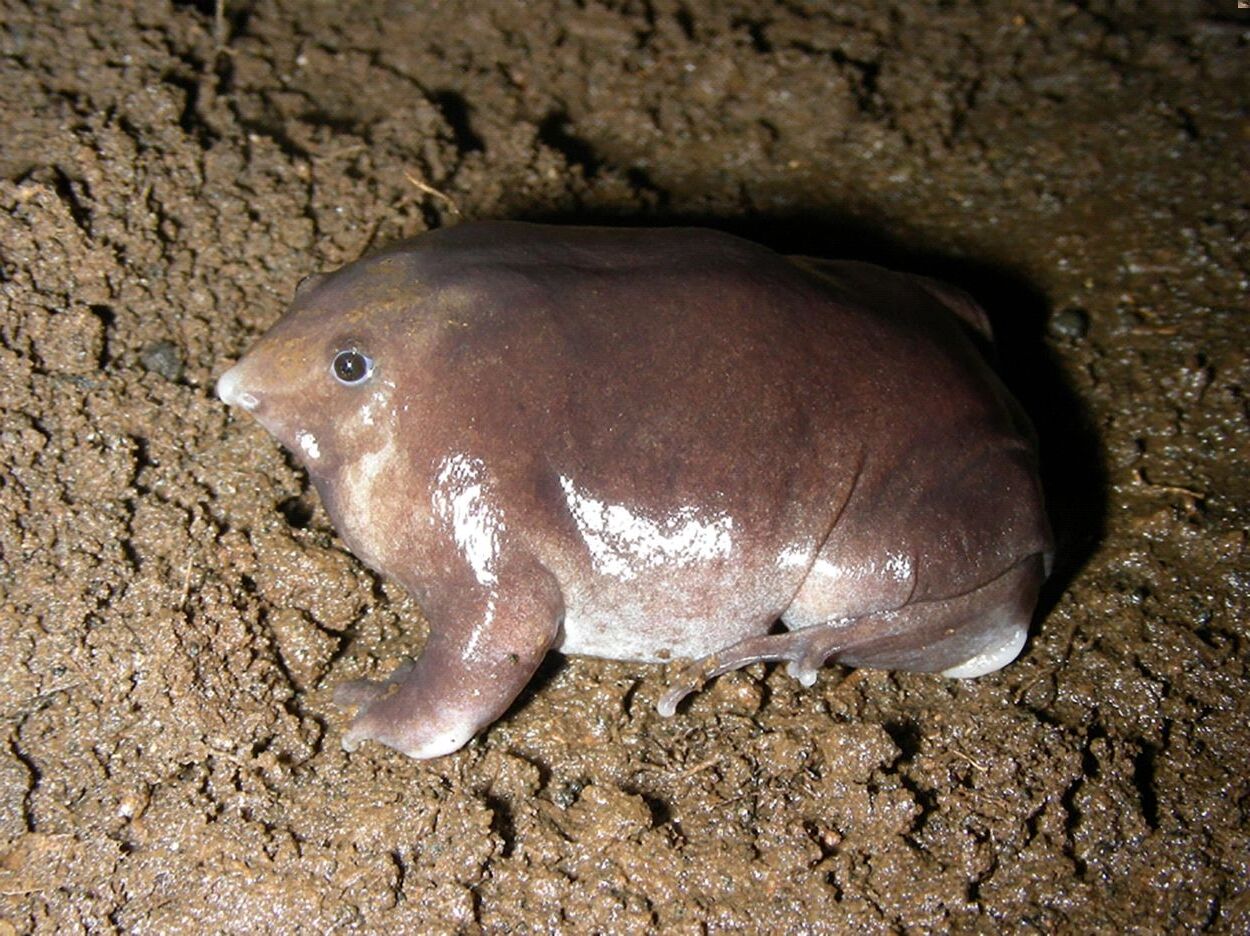
Did you know the Bhupathy Purple Frog is one of the most unique amphibians on Earth? This fascinating creature, also known as the Nasikabatrachus bhupathi, is found exclusively in the Western Ghats of India. With its bloated body, pointed snout, and dark purple skin, it looks like something out of a fantasy novel. Despite its unusual appearance, this frog spends most of its life underground, only emerging for a few days each year to breed. Its discovery in 2003 was a significant event in the scientific community, shedding light on the rich biodiversity of the region. Let's dive into 35 amazing facts about this incredible amphibian!
Key Takeaways:
- The Bhupathy Purple Frog, found in India's Western Ghats, is a rare and fascinating amphibian with purple skin, a pointed snout, and a unique lifestyle. It faces threats from habitat loss and climate change, making conservation efforts crucial for its survival.
- This enigmatic frog, with its ancient lineage and cryptic behavior, holds scientific and cultural significance. It plays a vital role in its ecosystem, and its discovery in 2017 has sparked ongoing research, uncovering new insights into amphibian biology.
Bhupathy Purple Frog: An Enigmatic Amphibian
The Bhupathy Purple Frog, also known as Nasikabatrachus bhupathi, is a fascinating creature with many unique characteristics. Found in the Western Ghats of India, this frog has intrigued scientists and nature enthusiasts alike. Let's dive into some intriguing facts about this rare amphibian.
Unique Physical Characteristics
The Bhupathy Purple Frog stands out due to its distinct appearance and features.
- Purple Skin: This frog has a striking purple hue, which helps it blend into its natural habitat.
- Pointed Snout: Its pointed snout is adapted for burrowing and feeding on underground insects.
- Small Eyes: The frog has small eyes, which are less prominent compared to other frog species.
- Rotund Body: It has a plump, rounded body that aids in its underground lifestyle.
Habitat and Distribution
Understanding where the Bhupathy Purple Frog lives can provide insights into its behavior and survival strategies.
- Western Ghats: This frog is endemic to the Western Ghats, a biodiversity hotspot in India.
- Subterranean Lifestyle: It spends most of its life underground, emerging only during the monsoon season.
- Moist Forests: Prefers moist, forested areas with loose soil for easy burrowing.
- Limited Range: Its distribution is limited to a small geographical area, making it vulnerable to habitat loss.
Reproduction and Lifecycle
The reproductive habits of the Bhupathy Purple Frog are as unique as its appearance.
- Monsoon Breeding: Breeding occurs during the monsoon season when the frogs emerge from underground.
- Explosive Breeding: Males call out to females in a short, intense breeding period.
- Egg Laying: Females lay eggs in temporary water bodies formed by rain.
- Tadpole Stage: Tadpoles develop in water before transforming into adult frogs.
Diet and Feeding Habits
The Bhupathy Purple Frog has specialized feeding habits that suit its subterranean lifestyle.
- Ants and Termites: Primarily feeds on ants and termites found underground.
- Sticky Tongue: Uses a sticky tongue to capture prey quickly.
- Nocturnal Feeder: Active at night, which helps avoid predators.
- Burrowing for Food: Digs through soil to find insects, showcasing its strong burrowing abilities.
Conservation Status
The Bhupathy Purple Frog faces several threats that impact its survival.
- Endangered: Listed as endangered due to its limited range and habitat destruction.
- Habitat Loss: Deforestation and land-use changes threaten its natural habitat.
- Climate Change: Altered weather patterns affect its breeding and survival.
- Conservation Efforts: Efforts are underway to protect its habitat and ensure its survival.
Scientific Significance
This frog holds significant value in the scientific community due to its unique evolutionary traits.
- Ancient Lineage: Belongs to an ancient lineage that dates back millions of years.
- Evolutionary Link: Provides insights into the evolution of amphibians.
- Genetic Studies: Genetic research helps understand its unique adaptations.
- Biodiversity Indicator: Acts as an indicator species for the health of its ecosystem.
Cultural and Ecological Importance
Beyond its scientific value, the Bhupathy Purple Frog plays a role in local culture and ecology.
- Local Legends: Featured in local folklore and myths.
- Ecosystem Role: Helps control insect populations, maintaining ecological balance.
- Soil Aeration: Burrowing activities aid in soil aeration and nutrient cycling.
- Educational Value: Serves as an educational tool for raising awareness about biodiversity.
Interesting Tidbits
Here are some lesser-known facts that add to the mystique of the Bhupathy Purple Frog.
- Discovered in 2017: Named after Dr. Subramaniam Bhupathy, a renowned herpetologist.
- Cryptic Behavior: Its elusive nature makes it difficult to study in the wild.
- Unique Vocalizations: Males produce distinctive calls during the breeding season.
- Longevity: Can live up to 10 years in the wild.
- Adaptation to Fire: Can survive forest fires by burrowing deep into the soil.
- Symbiotic Relationships: Engages in symbiotic relationships with certain insect species.
- Research Potential: Continues to be a subject of ongoing research, revealing new insights into amphibian biology.
The Final Leap
The Bhupathy Purple Frog is a fascinating creature with a unique story. Its discovery in the Western Ghats of India has shed light on the rich biodiversity of this region. This frog's distinct appearance and behavior make it a subject of interest for scientists and nature enthusiasts alike. Its burrowing lifestyle and rare sightings add to its mystique.
Conservation efforts are crucial for this species, as habitat loss poses a significant threat. Protecting the Western Ghats ensures the survival of the Bhupathy Purple Frog and countless other species. By raising awareness and supporting conservation initiatives, we can help preserve this unique amphibian.
Next time you think about frogs, remember the Bhupathy Purple Frog. Its story is a reminder of the wonders of nature and the importance of protecting our planet's biodiversity. Let's do our part to ensure these incredible creatures continue to thrive.
Frequently Asked Questions
Was this page helpful?
Our commitment to delivering trustworthy and engaging content is at the heart of what we do. Each fact on our site is contributed by real users like you, bringing a wealth of diverse insights and information. To ensure the highest standards of accuracy and reliability, our dedicated editors meticulously review each submission. This process guarantees that the facts we share are not only fascinating but also credible. Trust in our commitment to quality and authenticity as you explore and learn with us.


